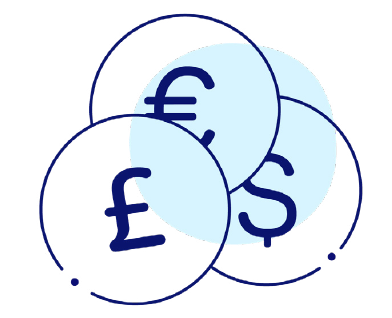29-07-2021 | treasuryXL | XE |
Need to add a new money transfer recipient, or make changes to someone you’ve sent a payment to in the past? Don’t worry—it’s easy with Xe.

When making an international payment, perhaps the most important detail is the payment’s recipient. Having all of the beneficiary’s details ready to go is crucial to ensure that you can quickly make your payments and they will go straight to their destinations without any delays.
Managing your money transfer beneficiaries within your Xe account is quick and simple. You can add in the information when you begin the payment process, or you can add them in ahead of time. Here’s what you need to know about managing your recipients.
Sign into your account or sign up
Before you can manage your recipients, you’ll need to be logged in to your Xe account.
If you don’t have an account, don’t worry. Signing up for an account is a simple, straightforward process and can be completed in a few minutes. If you want to know more about the process, you can take a look at our guide here.
Go to your recipients
Once you’ve signed into your account on Xe.com, you’ll see a “Recipients” section on the home page. Just head into that section, and you’ll see a list of every recipient that you’ve added thus far, along with the option to add a new recipient.
If you plan on sending money to the same person or entity multiple times in the future, their information will be securely stored here, where you can quickly select recipients (without needing to re-enter information every time you send money to them).
There’s no limit to beneficiaries either; you can add and manage as many recipients as you need.
How to add a new recipient
Once you’ve entered the recipient center, you’ll be prompted to provide information about your recipient. Having this information on hand and ready to go will ensure that your payments won’t face any delays.
You’ll need to enter:
-
The currency they’ll be receiving
-
The country their bank is in
-
Their name
-
Whether or not the account is a business account
-
Their address
-
Their bank account number
-
Their bank code (this will vary by country; examples include an ABA routing number in the United States and a sort code in the United Kingdom)
-
Their bank name
Before you can enter this information, you’ll be asked if you’re sending money to yourself. If you want to exchange currency to send to one of your own accounts in another country, this is an option. In that case, you would just answer “Yes” to the question “Are you sending money to your own account?” and provide your own information to the prompts above.
How to edit existing recipient details
Has one of your recipients changed their details? Good news—you won’t need to completely add them again. You can quickly update your existing recipients with any new details.
From the Recipients page, click on the recipient whose details you’d like to change, enter in your updates, and save these changes. You can also delete recipients if you don’t plan on sending money to them in the future.
Keep in mind that if you change a recipient’s details or delete them from your list, that won’t change the details of any open transactions with this recipient. If you have a payment in progress and you need to make a change to anything, please contact us as soon as possible.
Ready to get started?
Do you have a payment coming up? Get a head start and enter your recipient information ahead of time to make the process quick and simple when it comes time for transfer.
GET A QUOTE
Get in touch with XE.com
About XE.com
XE can help safeguard your profit margins and improve cashflow through quantifying the FX risk you face and implementing unique strategies to mitigate it. XE Business Solutions provides a comprehensive range of currency services and products to help businesses access competitive rates with greater control.
Deciding when to make an international payment and at what rate can be critical. XE Business Solutions work with businesses to protect bottom-line from exchange rate fluctuations, while the currency experts and risk management specialists act as eyes and ears in the market to protect your profits from the world’s volatile currency markets.
Your company money is safe with XE, their NASDAQ listed parent company, Euronet Worldwide Inc., has a multi billion-dollar market capitalization, and an investment grade credit rating. With offices in the UK, Canada, Europe, APAC and North America they have a truly global coverage.
Are you curious to know more about XE?
Maurits Houthoff, senior business development manager at XE.com, is always in for a cup of coffee, mail or call to provide you detailed information.

Visit XE.com
Visit XE partner page












